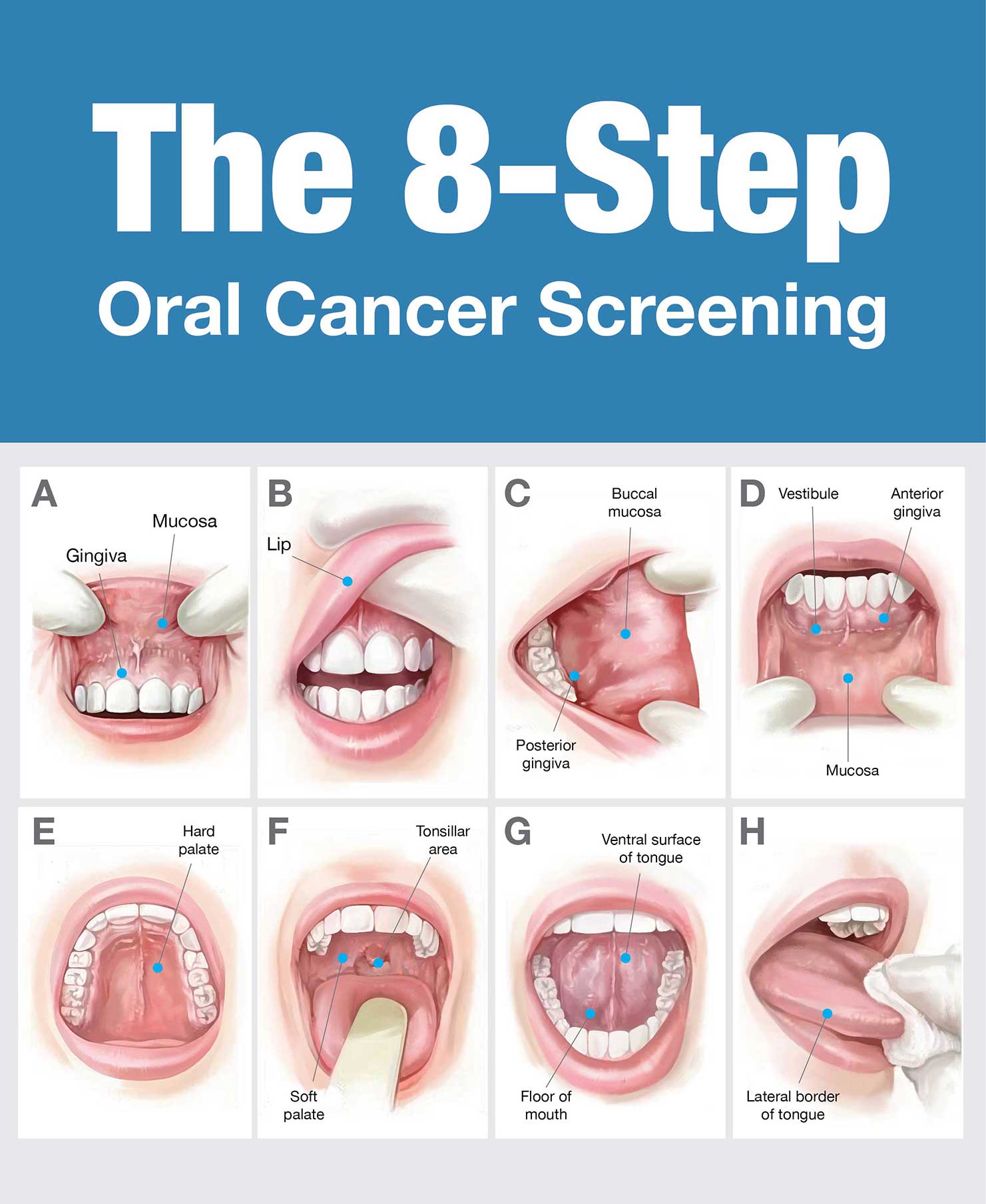
Oral Cancer
Cancer that develops in any part of the mouth.
Oral cancer is divided into two categories – those occurring in the oral cavity (your lips, the inside of your lips and cheeks, teeth, gums, the front two-thirds of your tongue and the floor and roof of your mouth) and those occurring in the oropharynx (middle region of the throat, including the tonsils and base of the tongue).
Causes
Tobacco and alcohol use. Tobacco use of any kind, including cigarette smoking, puts you at risk for developing oral cancers. Heavy alcohol use also increases the risk. Using both tobacco and alcohol increases the risk even further.
HPV. Infection with the sexually transmitted human papillomavirus (specifically the HPV 16 type) has been linked to oral cancers.
With Invisalign, much of the orthodontist’s work happens before you wear your aligners. A 3D scan of your teeth is used for making all the customised retainers in a laboratory. You should change the multiple sets of retainers on your orthodontist’s directions. There is no need to visit the orthodontics for adjustments so visits are kept to a minimum to check on progress. Few visits to the orthodontist means less time off work.Comfortable to Wear
Age. Risk increases with age. Oral cancers most often occur in people over the age of 40.
Sun Exposure. Cancer of the lip can be caused by sun exposure.
Diet. A diet low in fruits and vegetables may play a role in oral cancer development.
Symptoms
If you have any of these symptoms for more than two weeks, see a dentist or a doctor.
-
 A sore, irritation, lump or thick patch in your mouth, lip, or throat
A sore, irritation, lump or thick patch in your mouth, lip, or throat -
 A white or red patch in your mouth
A white or red patch in your mouth -
 A feeling that something is caught in your throat
A feeling that something is caught in your throat -
 Difficulty chewing or swallowing
Difficulty chewing or swallowing -
 Difficulty moving your jaw or tongue
Difficulty moving your jaw or tongue -
 Swelling in your jaw
Swelling in your jaw -
 Numbness in your tongue or other areas of your mouth
Numbness in your tongue or other areas of your mouth -
 Pain in one ear without hearing loss
Pain in one ear without hearing loss
Because oral cancer can spread quickly, early detection is important. An oral cancer examination can detect early signs of cancer. The exam is painless and takes only a few minutes. Dr.Mageshwari (punnagai Dental Hospital -Rajapalayam) will perform the test during your regular dental check-up.
During the exam, Doctor will check your face, neck, lips, and entire mouth for possible signs of cancer.


